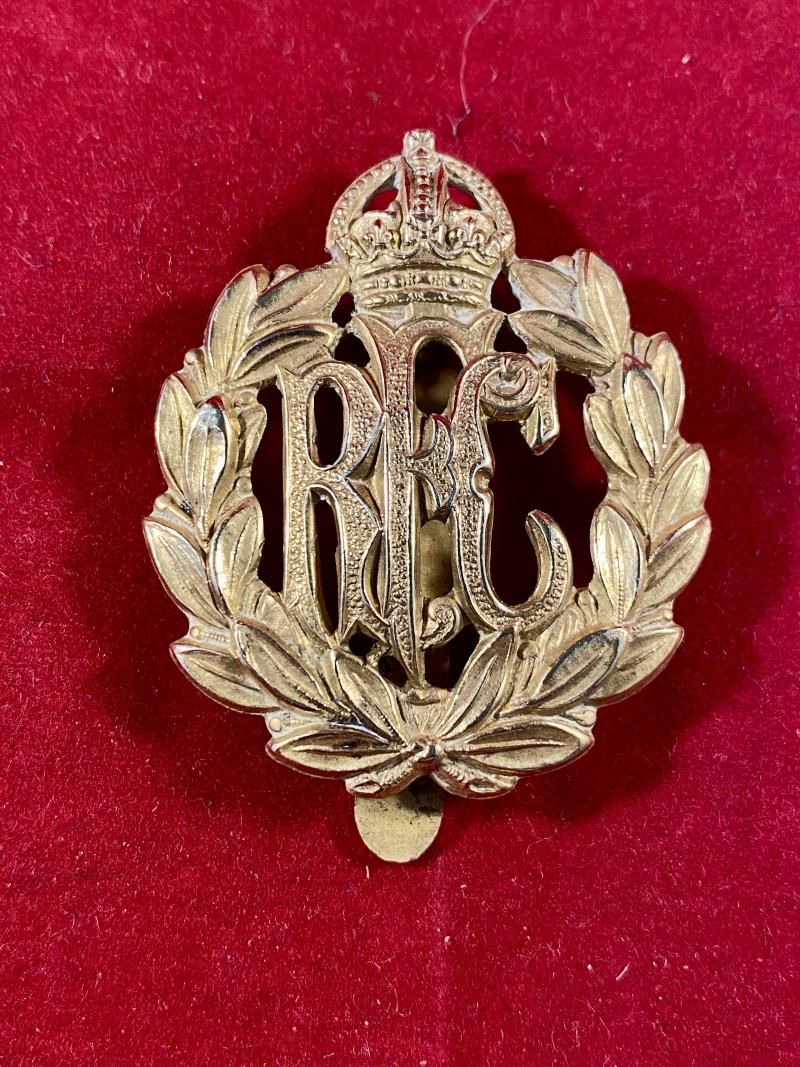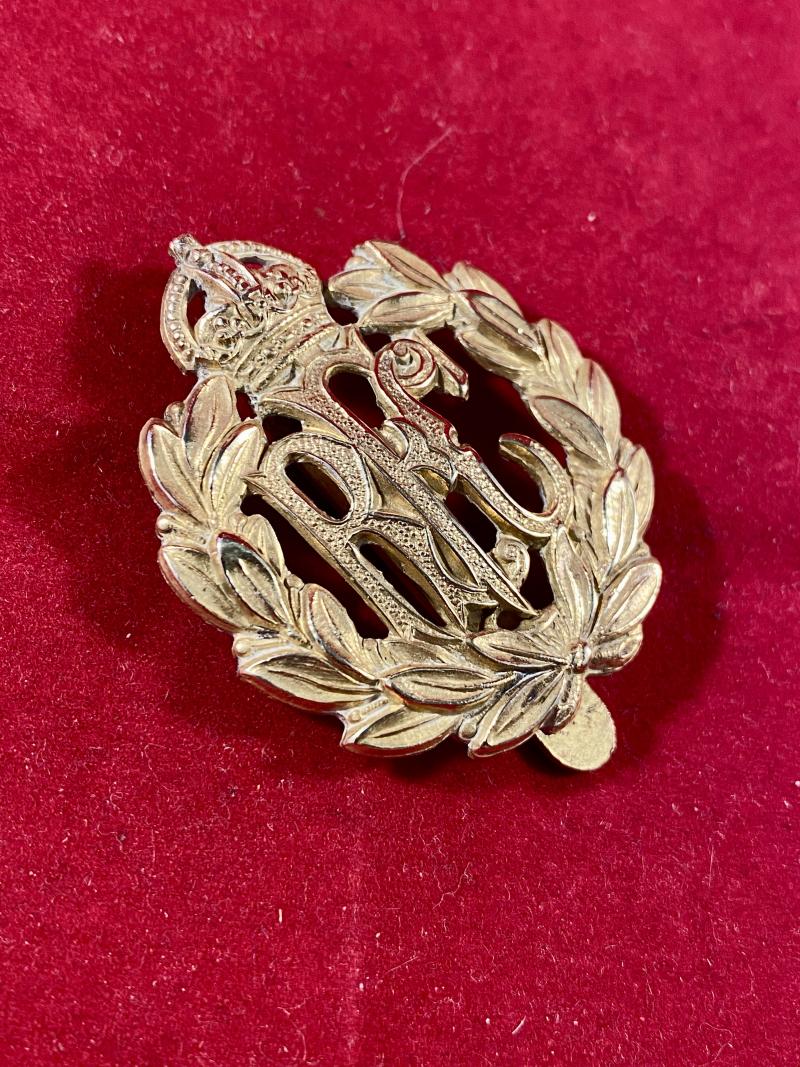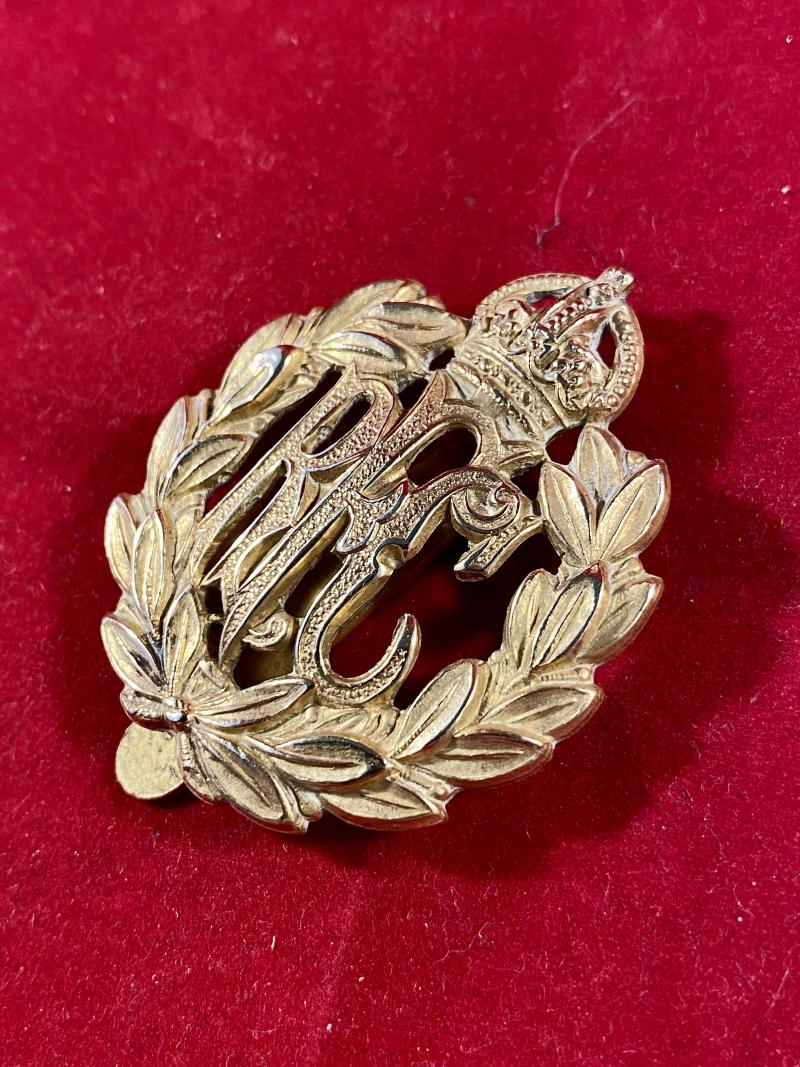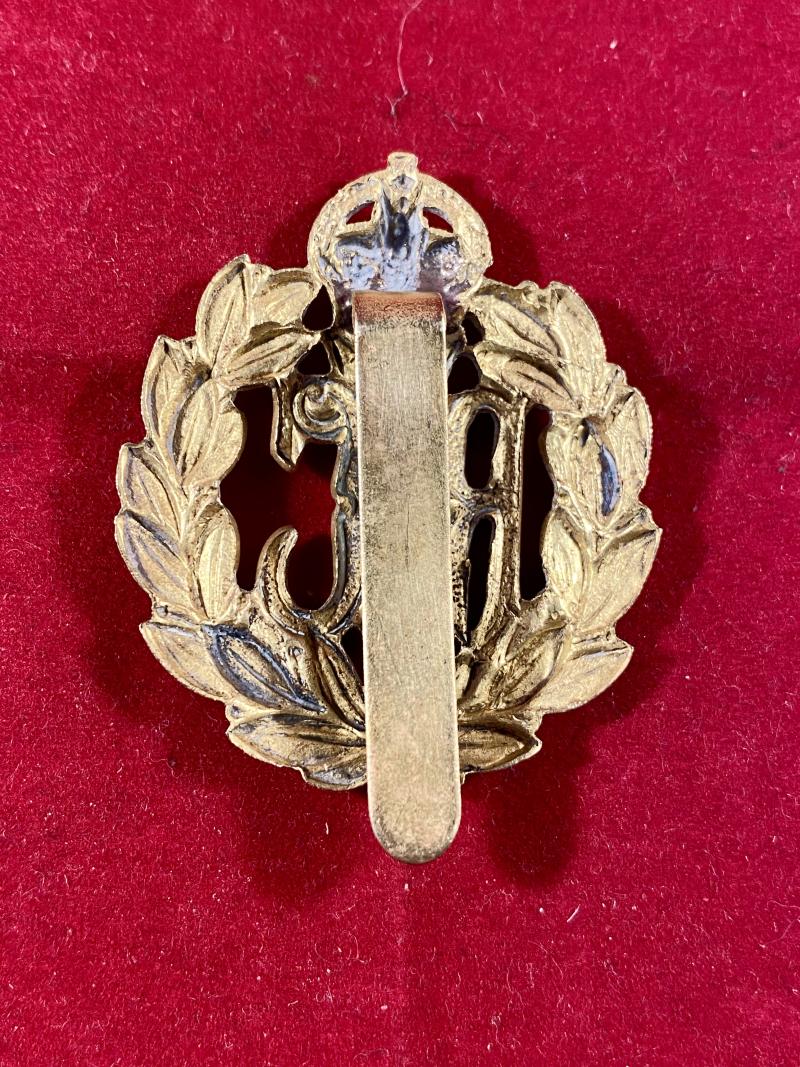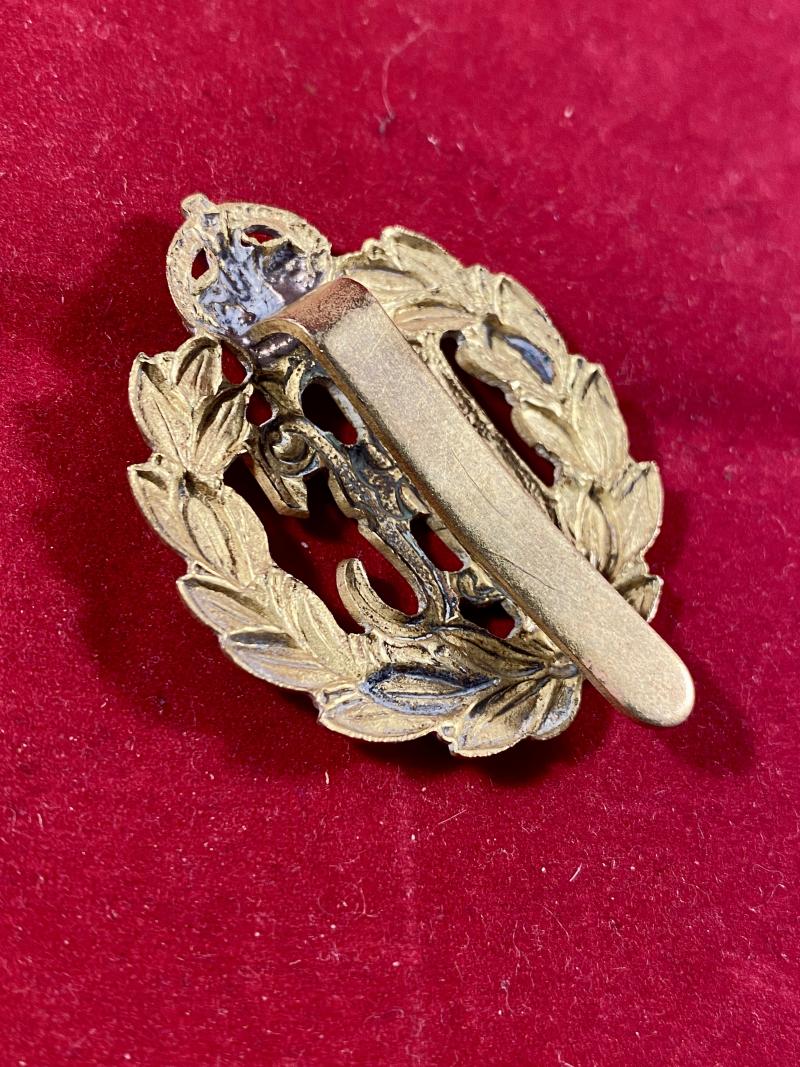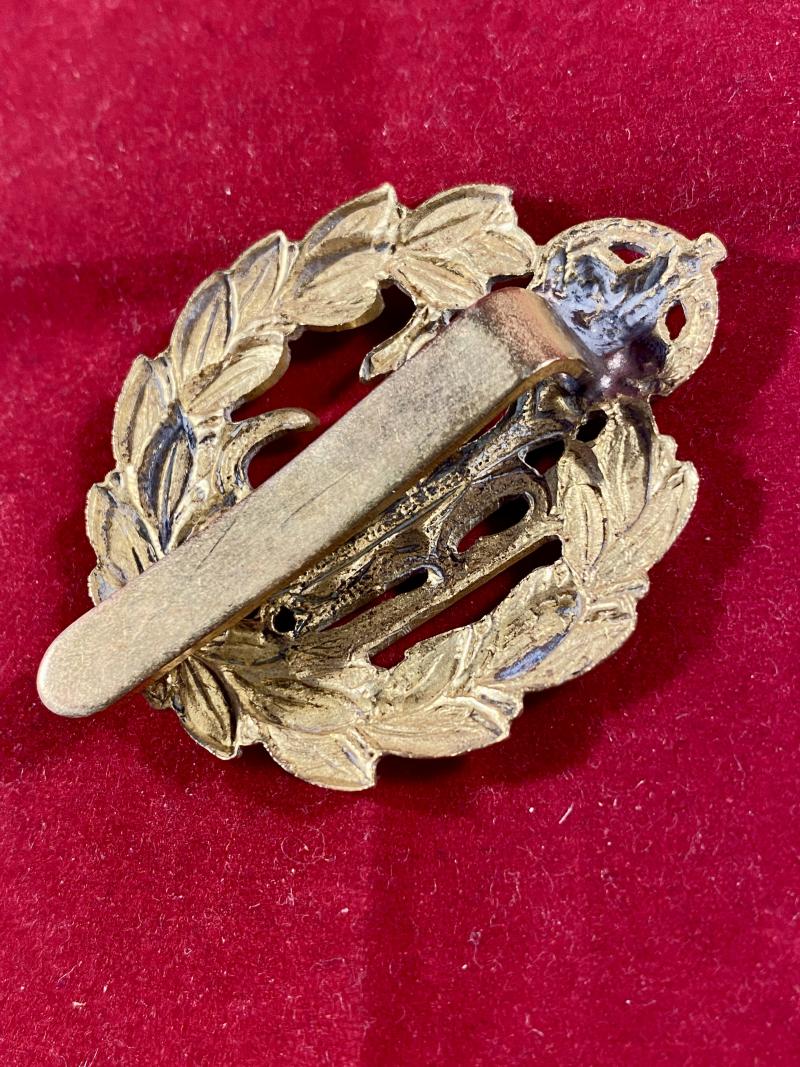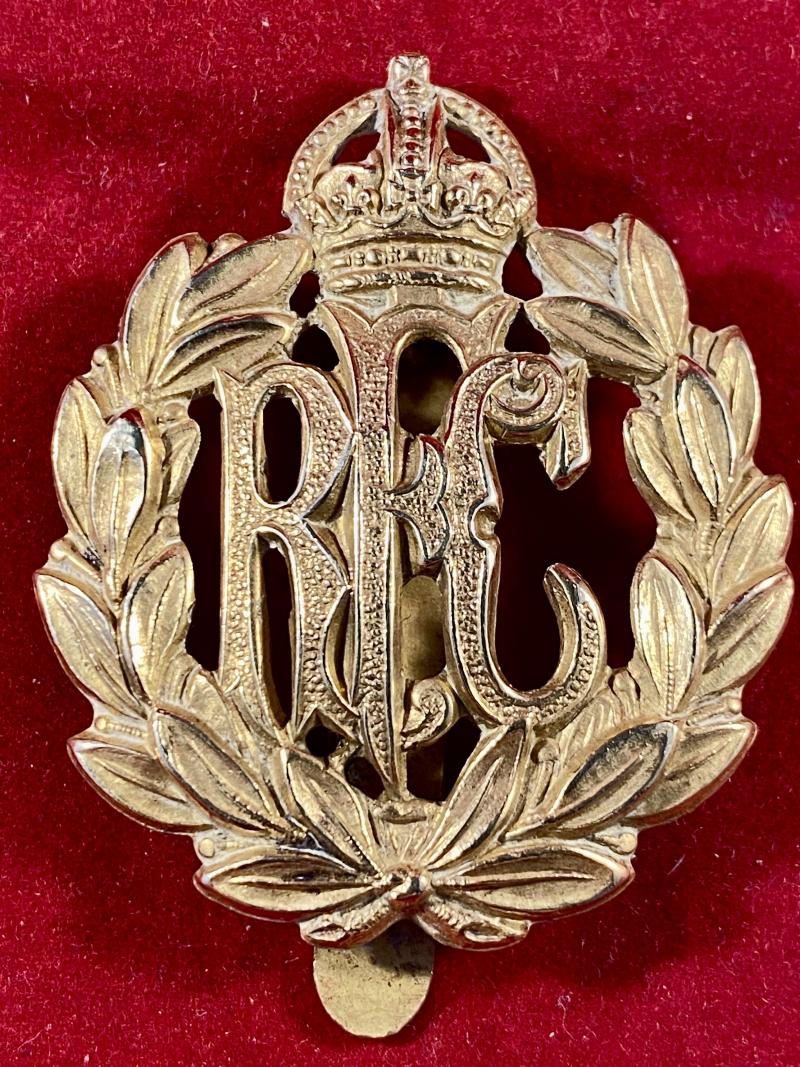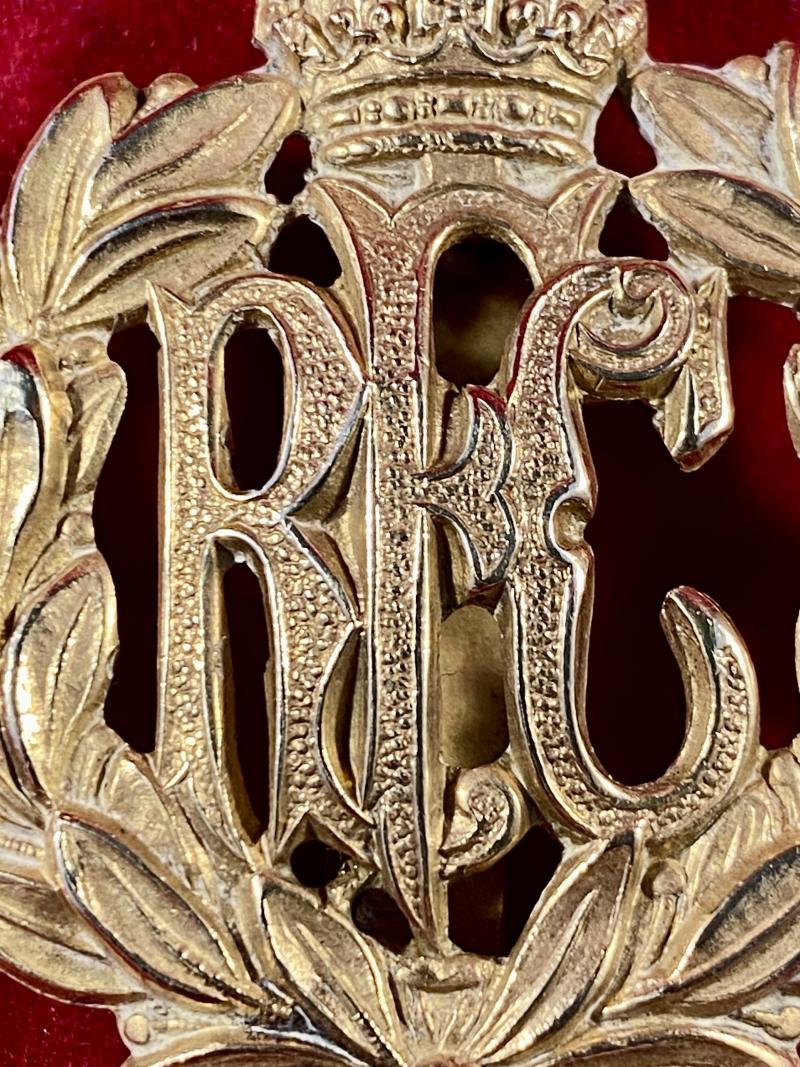Near Mint WW1 British Royal Flying Corps (RFC) Slider Cap Badge
Here on offer is a beautiful example of a gilt brass WW1 Royal Flying Corps (RFC), slider cap badge.
It has the normal Royal Flying Corps, RFC surrounded by a laurel wreath crest, topped with a crown. On the back it has the brass slider for easy fitting to a cap.
The badge itself is in excellent original condition, still retaining its bright finish and all it’s original crisp detail.
It measures 1.5” (3.8cm) wide by 1.75” (4.5cm) high and weighs 12g.
Some history about the RFC.
The Royal Flying Corps (RFC) was the air arm of the British Army before and during the First World War, until it merged with the Royal Naval Air Service on 1 April 1918 to form the Royal Air Force. During the early part of the war, the RFC supported the British Army, by artillery co-operation and photographic reconnaissance. This work gradually led RFC pilots into aerial battles with German pilots and later in the war included the strafing of enemy infantry and emplacements, the bombing of German military airfields and later the strategic bombing of German industrial and transportation facilities. At the start of World War I the RFC, commanded by Brigadier-General Sir David Henderson, consisted of five squadrons - one observation balloon squadron (RFC No 1 Squadron) and four aeroplane squadrons. These were first used for aerial spotting on 13 September 1914, but only became efficient when they perfected the use of wireless communication at Aubers Ridge on 9 May 1915. Aerial photography was attempted during 1914, but again only became effective the next year. By 1918, photographic images could be taken from 15,000 feet, and interpreted by over 3,000 personnel. Parachutes were not available to pilots of the RFC's heavier-than-air craft - nor were they used by the RAF during the First World War - although the Calthrop Guardian Angel parachute (1916 model) was officially adopted just as the war ended. By this time parachutes had been used by balloonists for three years.
On 17 August 1917, South African General Jan Smuts presented a report to the War Council on the future of air power. Because of its potential for the 'devastation of enemy lands and the destruction of industrial and populous centres on a vast scale', he recommended a new air service be formed that would be on a level with the Army and Royal Navy. The formation of the new service would, moreover, make the under-utilised men and machines of the Royal Naval Air Service (RNAS) available for action across the Western Front, as well as ending the inter-service rivalries that at times had adversely affected aircraft procurement. On 1 April 1918, the RFC and the RNAS were amalgamated to form a new service, the Royal Air Force (RAF). The RAF was under the control of the new Air Ministry. After starting in 1914 with some 2,073 personnel, by the start of 1919 the RAF had 4,000 combat aircraft and 114,000 personnel in some 150 squadrons.
Please see my pictures for the details of the condition, which complement this description.
Please see my TERMS OF BUSINESS regarding Deliver Charges and Insurance regarding additional insurance cover, should you require it, BEFORE the item is dispatched.
The responsibility lies with the customer to check with your Customs restrictions that this item can be imported into your country.
Code: 51277

